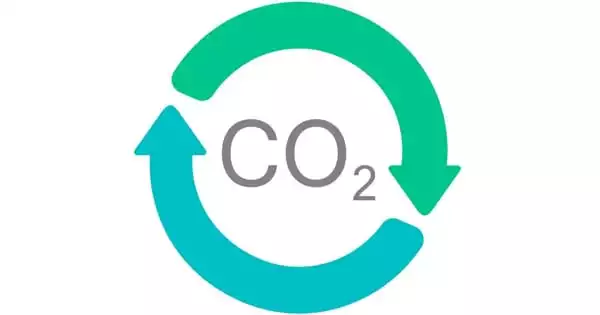Carbon capture and storage can aid in the achievement of long-term development goals. It also allows for the provision of affordable energy as well as the decarbonization of industry. Carbon capture and storage must be sustainable in order to be a truly successful alternative in attempts to prevent climate change.
The process of absorbing, securing, and storing carbon dioxide from the atmosphere is known as carbon sequestration. The goal is to stabilize carbon in both solid and dissolved forms so that it does not warm the atmosphere. The technique has a lot of potential for lowering the human “carbon footprint.”
Carbon dioxide (CO2) levels in the atmosphere have risen dramatically over the last 50 years, resulting in greater global temperatures and sudden changes to the Earth’s climate. Carbon capture and storage (CCS) is one of the new technologies that scientists think will help them combat climate catastrophe. It entails capturing CO2 from industrial processes or the combustion of fossil fuels in power generation, which is then deposited underground in geological formations. CCS will also be critical if we wish to generate “clean-burning” hydrogen from hydrocarbon systems.
The UK government recently picked four sites to create multibillion-pound CCS projects as part of its plan to reduce heavy industry’s CO2 emissions by 20-30 million tonnes per year by 2030. Other governments have made similar commitments to reduce carbon emissions.
We compared the (bio)geochemical composition of the CO2-EOR flooded field to that of a nearby field that had never been exposed to CO2-EOR. According to data, up to 74% of the CO2 emitted by CO2-EOR was dissolved in groundwater.
Dr. Rebecca Tyne and Prof. Chris Ballentine
Depleted hydrocarbon reservoirs have a lower storage potential (10%) than deep saline aquifers, but they are viewed as an important early opportunity in developing geological CO2 storage methods. Fortunately, CO2 has previously been injected into a number of depleted hydrocarbon reserves as a means of improving oil recovery (CO2-EOR). This is a once-in-a-lifetime opportunity to assess the (bio)geochemical behavior of injected carbon over-engineering timescales.
‘CCS will be a critical instrument in our fight to mitigate climate change. Understanding how CCS works in practice, in addition to computer modeling and lab-based research, is critical for providing confidence in safe and secure CO2 geological sequestration.’ According to Dr. Rebecca Tyne of the University of Oxford’s Department of Earth Science.

Dr. Rebecca Tyne and Prof. Chris Ballentine of Oxford University led a team of worldwide colleagues to explore the behavior of CO2 within a CO2-EOR flooded oil field in Louisiana, USA, in a paper published in Nature. They compared the (bio)geochemical composition of the CO2-EOR flooded field to that of a nearby field that had never been exposed to CO2-EOR. According to data, up to 74% of the CO2 emitted by CO2-EOR was dissolved in groundwater. Surprisingly, research also found that microbial methanogenesis converted up to 13-19% of the administered CO2 to methane, a greater greenhouse gas than CO2.
This is the first study to combine cutting-edge isotopic tracers (noble gas, clumped, and stable isotope data) with microbiological data to evaluate the fate of injected CO2.
The process of storing carbon dioxide in subsurface geologic formations, or rocks, is known as geological carbon sequestration. Carbon dioxide is typically extracted and injected into porous rocks for long-term storage from an industrial source, such as steel or cement manufacture, or an energy-related source, such as a power station or natural gas processing facility. Carbon capture and storage allow for the continued use of fossil fuels until a more sustainable energy source is adopted on a big scale.
‘Because methane is less soluble, compressible, and reactive than CO2, its production reduces the quantity of CO2 we can safely inject into these sites. However, now that this process has been established, we can consider it in future CCS site selection.’ Prof. Chris Ballentine of the Department of Earth Sciences at the University of Oxford stated.
Furthermore, the authors contend that a similar process is taking place in other CO2-rich natural gas resources and CO2-EOR oil fields. Temperature is an important factor, and many CCS geological sites will be too deep and hot for microbesto to potentially work. This mechanism could occur if CO2 seeps from deeper hot systems onto similar shallower colder geological structures containing microorganisms. This research is vital for determining future CCS targets, creating safe baseline conditions, and developing long-term monitoring systems, all of which are required for low-risk, long-term carbon storage.
















